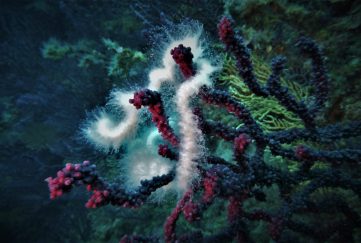Salmon farmers on alert for deadly jellyfish

A warning has gone out about the appearance of a particularly vicious type of jellyfish along the Norwegian coast which can have a devastating effect on salmon.
Called Perlesnormanet (Pearl Norman, Latin name Apolemia uvaria), it has led to the mass death of salmon in the past.
According to the Norwegian Marine Research Institute there have been increased sightings of this jellyfish, which can grow up to 30 metres long.
Apolemia uvaria is a siphonophore, and like others of its kind, while it appears to be one single animal it is actually a colony of tiny organisms that cannot survive independently.
It can live from the surface down to a depth of 1,000 metres, and is common in the Atlantic Ocean.
The Institute says Perlesnormanet, also known as the barbed wire or string jellyfish, carries a strong stinging venom that can kill fish.
The statement continues: “The colony is pelagic and drifts with the ocean currents, and can occur throughout the water column from the surface to 1,000 metres deep.
“Occurrence and distribution of Apolemia uvaria along the Norwegian coast is probably linked to the influx of water masses of Atlantic origin.
“Previous reports from blooms in 1997 and 2001 indicate that the jellyfish occur in highest concentrations at the far end of the coast. Around 400 tonnes of fish were lost in the 2001 attack which took place in Trondelag.”
It adds: “This year, a number of reports have been received from the fjord and inside the coast. In recent years, a higher density of Perlesnormanet has been seen in autumn along the coast.
“The nettle threads have strong poison, and can kill fish. Colonies can break up into smaller pieces when they come into contact with cages, allowing smaller pieces to penetrate the meshes.”
“Fish that come into contact with the jellyfish can suffer burns, open wounds with a risk of infection. Damage to the eyes and gills has also been reported.
It concludes: “There have also been reports of stressful behaviour, as well as changes in appetite, in fish in cages due to an increased density of jellyfish.”

